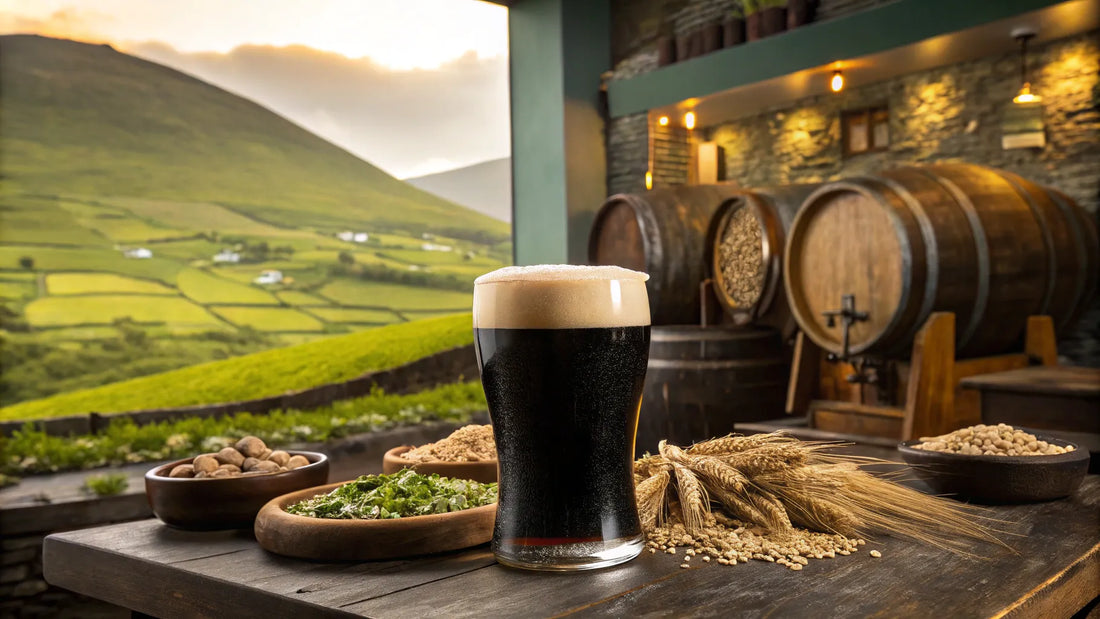The Impact of Guinness: How This Beer Giant Changed the World

In this article we explore the fascinating history of Guinness and how this iconic beer not only changed the world of brewing, but also influenced technology, culture and advertising. Discover the stories behind the creation of this unique beer and its lasting impact on society.
The Origin of Beer and the Role of Guinness 🍺
Beer has a long and rich history, dating back to the earliest civilizations. From the ancient Mesopotamians to the Egyptians, beer played a crucial role in social and religious rituals. It was not only a source of refreshment, but also an important food. The fermentation processes required to make beer have helped humanity develop agricultural techniques and understand microbiology.
Guinness, founded in 1759 by Arthur Guinness, has a unique place in this history. With its signature dark color and creamy texture, the company has not only made its own mark on beer culture, but also the way beer is experienced worldwide. The success of Guinness has contributed to the popularity of the brewing process and inspired other breweries to embrace innovative techniques.
The role of Guinness in the global beer culture
Guinness is more than just a beer; it is a cultural phenomenon. The iconic branding and marketing strategies have made the brand recognizable worldwide. From the famous "Guinness is good for you" to the playful animal advertisements, the marketing has always emphasized the quality and uniqueness of the beer.
With its strong presence in countries from Ireland to Africa and the Caribbean, Guinness has played an important role in connecting people and creating communities around the enjoyment of beer.
The History of Guinness 📜
Guinness has a fascinating history that begins in 1759, when Arthur Guinness signed a 9,000-year lease for the St. James's Gate Brewery in Dublin. This was the start of a beer empire that would eventually become the largest brewery in the world.
In the early 1800s, Guinness began brewing English-style Porter, which became a big hit in Ireland. The combination of quality and innovative techniques ensured that Guinness could quickly establish itself on the market. By the end of the 20th century, the brand was one of the most recognizable beers in the world.
Important milestones in history
- 1759: Establishment of the St. James's Gate Brewery.
- 1803: Start brewing English style Porter.
- 1959: Launch of the Nitro beer technology.
- 2000: Guinness becomes the largest brewery in the world.
Technological Innovations in the Brewery ⚙️
Guinness has always been at the forefront when it comes to technological innovations in the brewery. From early experiments with pasteurization to the development of advanced cooling systems, the brewery has continually adapted to the changing needs of the market.
One of the most notable innovations is the introduction of nitrogen into the brewing process. This led to the creation of the iconic Nitro beer, which is now praised for its creamy texture and unique taste. This technology has not only changed the way Guinness is brewed, but also the way people experience beer.
Innovations that have transformed the brewery
- Pasteurization: Extends the shelf life of the beer.
- Cold brewing: Provided better taste and quality.
- Nitrogen Injection: Created the signature creamy texture of Nitro beer.
The Creation of Nitro Beer 💨
The creation of Nitro beer was a game changer for Guinness. Before the 1950s, Guinness was a traditional carbonated beer, but it was difficult to pour and serve. This led to the development of a new method of carburizing with nitrogen, which resulted in the creamy texture we know today.
Michael Ash, a mathematician and brewery technologist, played a crucial role in this transformation. He developed a system that injected nitrogen into the beer, making the head thicker and the taste softer. This innovation allowed Guinness to increase its popularity and enter new markets.
The Impact of Nitro Beer
Nitro beer has not only changed the way Guinness is brewed, but also consumer expectations. People are now looking for a unique drinking experience that offers the creamy texture and rich taste of Nitro beer. This has led to a resurgence of interest in craft beers and new brewing techniques.
The Unique Taste and Texture of Guinness 🍻
One of the most distinctive aspects of Guinness is its unique taste and texture. The dark beer has a rich, roasted flavor with notes of coffee and chocolate, which sets it apart from other beers. The addition of nitrogen gives the beer a creamy, silky texture that makes it easy to drink.
The combination of these elements has ensured that Guinness is not just a beer, but an experience. From the first sip to the last drop, the flavors and textures continue to delight the senses and make it a favorite among beer lovers around the world.
How the taste of Guinness is achieved
- Ingredients: High-quality barley, hops, yeast and water.
- Brewing process: Specific techniques for roasting barley.
- Nitro carbonization: Provides the creamy texture and foam head.
The Evolution of Guinness Advertising 📣
Guinness advertising has undergone a unique evolution, beginning in the early 20th century. Initially, the company believed that the quality of the beer spoke for itself. Only after a decline in sales, around the 1920s, was the power of advertising recognized.
The first advertisements were simple, focusing on the quality and benefits of Guinness. The message was often that Guinness was good for you, which, although controversial, attracted attention. This marked the beginning of a long and successful advertising history.
The role of Gilroy in advertising history
Alfredo Gilroy, a pioneer in the advertising world, played a crucial role in shaping Guinness's modern identity. His creative approach led to some of the most iconic advertisements in history.
With his playful and humorous style he managed to attract the attention of the audience. The famous 'Zookeeper' advertisements are an example of this. These advertisements, full of charm and imagination, gave Guinness a unique positioning in the market.
Important features of Gilroy's advertisements
- Playfulness: Gilroy's advertisements were always cheerful and full of humor.
- Visual Appeal: The illustrations were vibrant and memorable.
- Focus on quality: The advertisements always emphasized Guinness's high-quality ingredients.
The Guinness Book of Records: A Unique Marketing Story 📚
The Guinness Book of Records is one of the most recognizable marketing concepts in the world. The idea originated in the 1950s, when a discussion about the fastest game during a hunt led to the creation of a record-collecting book.
Arthur Guinness, the company's CEO, decided to commission a book that would document all the records, from the highest to the strangest. This book quickly became a worldwide phenomenon and helped not only spread the Guinness name, but also create a unique bond with the public.
Impact of the Guinness Book of Records
The Guinness Book of Records has not only provided a marketing tool, but has also inspired people to push their limits. Many people have dedicated their entire lives to breaking records, which has led to remarkable achievements.
The book contributed to the popularity of bizarre and unique records, making it a cultural phenomenon. From the highest to the strangest, the book remains a source of wonder and inspiration for people of all ages.
Some remarkable records from history
- Tallest man: Robert Wadlow, with a height of 2.72 meters.
- Most hot dogs eaten in one sitting: A record that is challenged every year.
- Longest nails: A record that is still impressive.
The Lasting Impact of Guinness on the World 🌍
Guinness has had a lasting impact on the world, not only in the beer industry, but also culturally and socially. The beer's unique taste and texture have brought countless people together, from local pubs to global events.
In addition, the brand has used its influence to support social and cultural initiatives. From sporting events to art projects, Guinness has always strived to connect with the community.
Guinness and social responsibilities
Guinness has also been committed to social responsibilities, such as promoting responsible drinking behavior. The brand has launched campaigns to make consumers aware of the consequences of excessive alcohol consumption.
Due to its influential position in the market, Guinness can set an example for other brands and the industry as a whole. The focus on ethics and responsibility remains an important aspect of their business operations.
The Future of Guinness
With the continued evolution of the beer industry, Guinness continues to adapt to the changing tastes and preferences of consumers. Innovations such as new brewing techniques and sustainability initiatives are crucial for the future of the brand.
Guinness's lasting impact on the world is a testament to the power of creativity, quality and community. While the brand celebrates its heritage, it also continues to look ahead to new opportunities and challenges.





